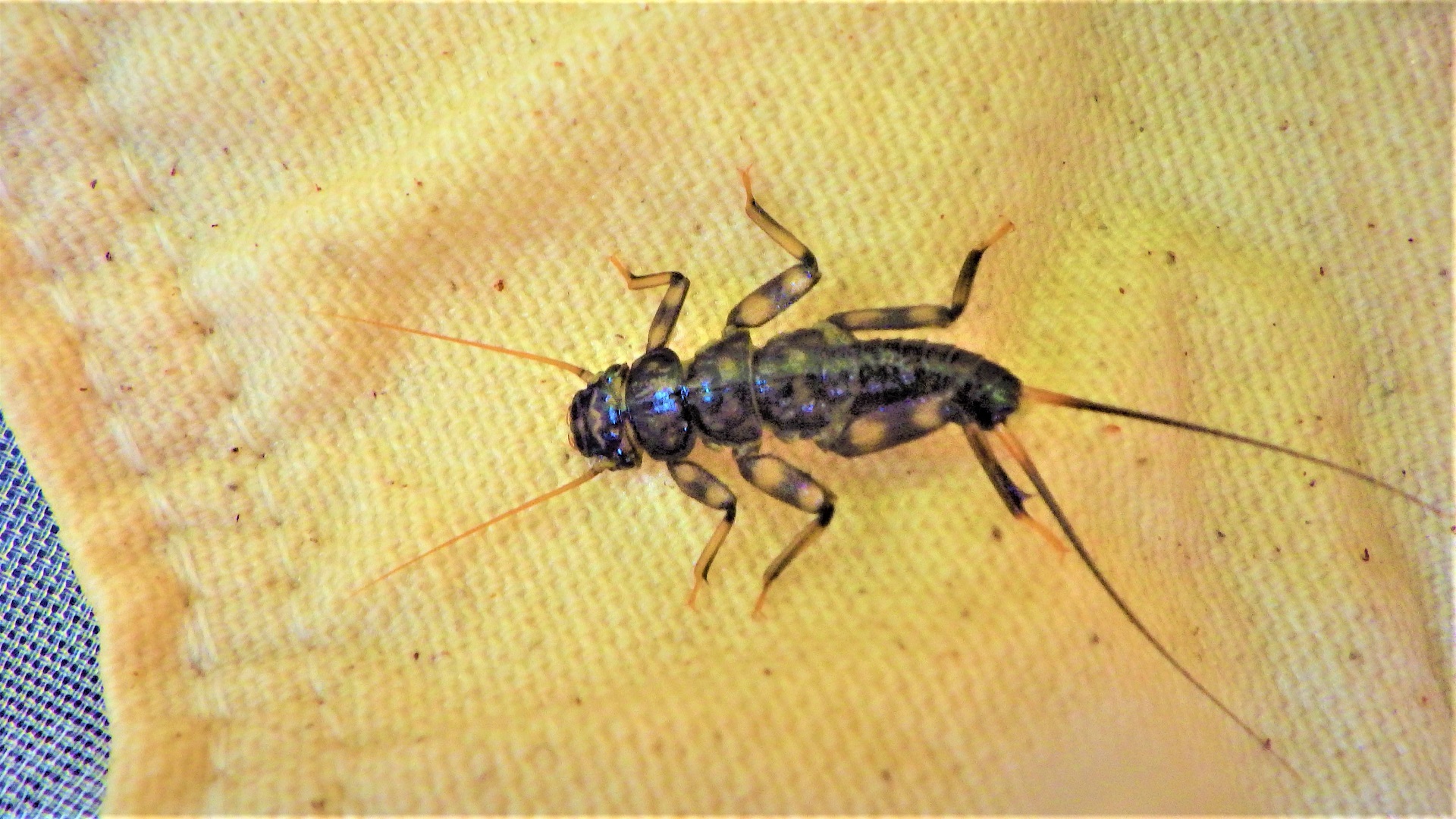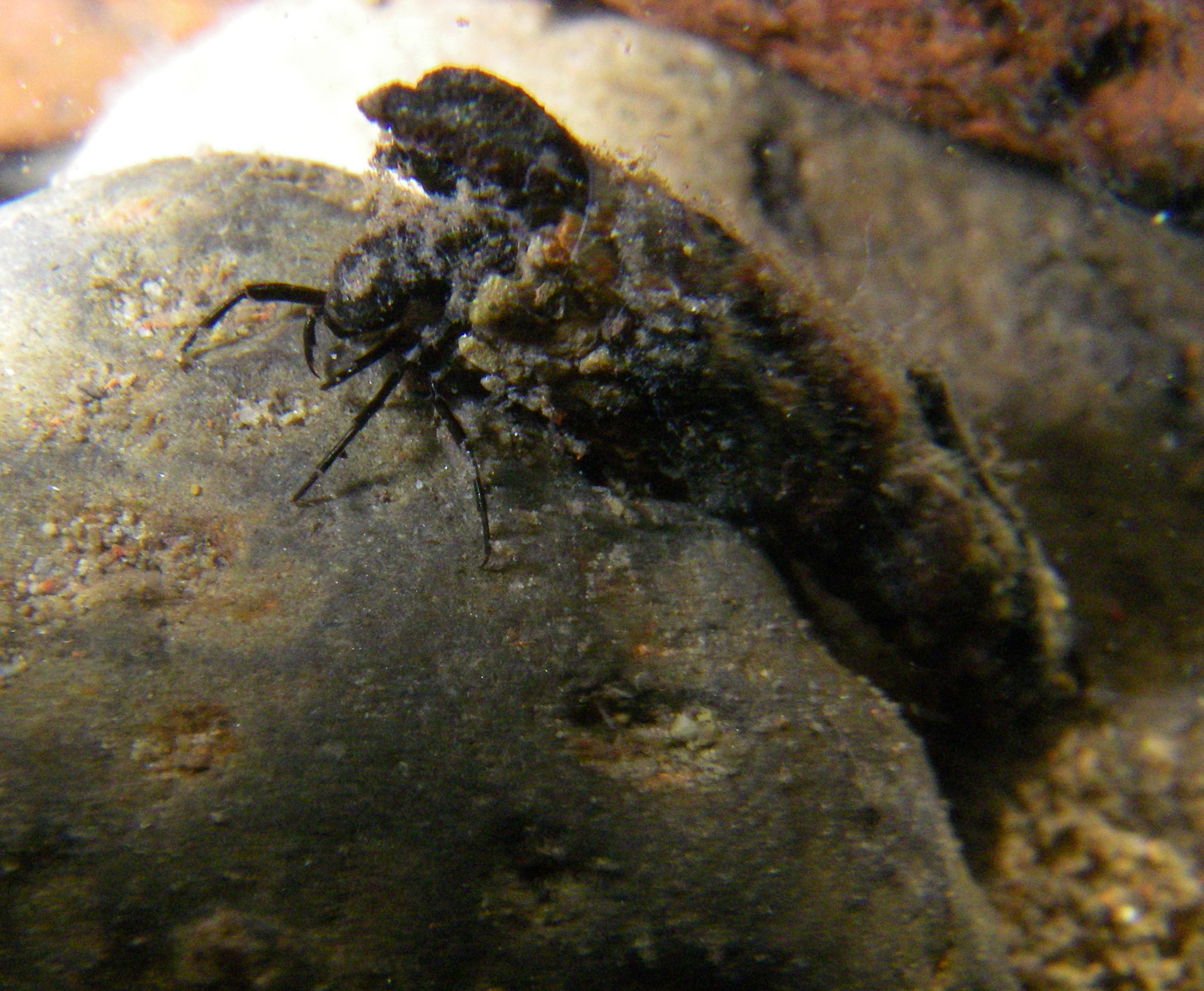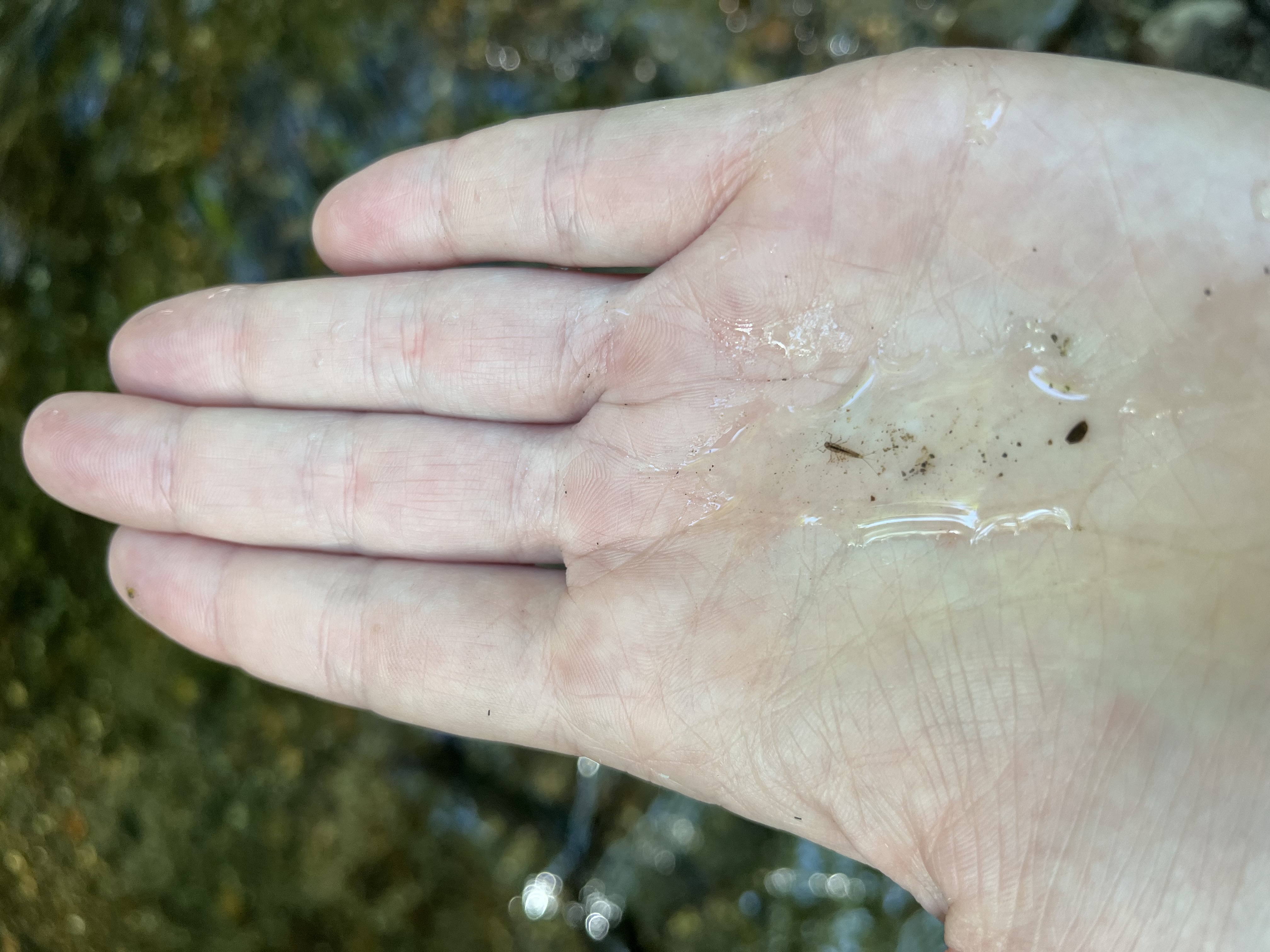
A stonefly, plecoptera
You can tell a lot about a stream by looking at its bugs. When you see a variety of them living in the muck of a streambed, foraging on leaf litter and even-smaller critters, that’s a strong indicator that a stream is healthy.
Those stream bugs — called benthic macroinvertebrates by freshwater ecologists — feed fish, birds, and other animals that live in and around streams. A stream that can’t support a lot of bugs in its streambed can’t support many fish, either.
Stream bugs are sensitive to minor changes in the water they live in. This sensitivity is useful to scientists who study stream health. If these sensitive species are found in streams, we know the stream is generally healthy – including water quality, streambed material, and stream-adjacent plant cover. By studying connections between healthy streams and the conditions in these streams, we are closer to learning how to protect them.
Annual sampling journeys
Scientists and technicians from our Watershed Health Monitoring program go out every summer to check up on rivers and streams around the state. They collect data from rivers and streams in one of eight regions each year and have been collecting this information since 2009.
The team checks each stream’s temperature, tests the water’s chemical composition, and counts the numbers and types of benthic invertebrates they find to determine if the health of the stream is good, fair, or poor.
See our website linked above to learn more about the B-IBI stream-scoring system and more of what we have been learning from this long-term study.
Our favorite bugs
While our scientists collect macroinvertebrate data at each stream visited by Watershed Health Monitoring, there are three key species they look out for — mayflies, stoneflies, and caddisflies. Each of these insect species has an aquatic larval stage; they grow up to adulthood under water and emerge as a flying adult for a short time.
They are such highly important constituents of stream ecosystems that their presence increases the B-IBI score, an indicator of a healthy stream. Together, scientists call the group of invertebrates the EPT group for the first initials of their scientific names — Ephemeroptera, Plecoptera, and Trichoptera. This EPT group of benthic invertebrates fills important niches in freshwater ecosystems. When these are missing, it can be an early sign of trouble.
Mayflies — Ephemeroptera
Mayflies are tiny, but important.
The mayfly's scientific name is derived from the term "ephemeral," lasting only for a short time. This is an apt name, considering that once they emerge from the water as adults, they typically only live a day or two! Lacking even a mouth, their only purpose at this stage is to reproduce. As larvae, mayflies have a wide range of dietary preferences, with most species being algae-feeders and some being predatory. Mayfly larvae can be highly sensitive to chemical pollutants like metals and fertilizers, so minimal presence in a stream is often a good indication that too much pollution is entering as runoff.
Stoneflies — Plecoptera
Stoneflies like clear water.
The stonefly's scientific name plecoptera derives from the Greek word for “to braid,” a reference to the many veins on the wings of the adults that overlap when they are resting. Stonefly larvae can usually be identified by the two antenna-like filaments called cerci on their abdomen, whereas the majority of mayfly larvae have three. Like mayflies, stoneflies mostly feed on algae, but some are predatory. They are often highly sensitive to human disturbances that kick up lots of sediment, preferring streams to be nice and clear.
Caddisflies — Trichoptera
Caddisflies build stone shells.
The “trich” in trichoptera means hair, referring to the adults' wings being covered in small hairs rather than scales like in a butterfly. The larvae are well known for constructing tube-like shells out of material they find in streambeds, including pebbles, plant matter, and even the shells of other invertebrates! These materials are held together by durable waterproof silk. This shell can protect them from some predators, but that isn't all they need. If stream conditions aren’t right, such as too-high water temperatures or too much pollution, they will halt their development until conditions are right.
Finding these benthic invertebrates in your local freshwater river or stream is a good sign that your stream is healthy. Leave them as you find them — in their important niche in the freshwater food web.
The big picture
Learn more about our work on our website and from our partners. Our work informs:
- Our online interactive regional reports.
- The biennial State of Salmon report from the Governor's Salmon Recovery Office.
- Local stream-protection and water-quality-improvement projects.
We also contribute to the Puget Sound Stream Benthos database, an important repository of stream data used to track long-term stream-health trends.


